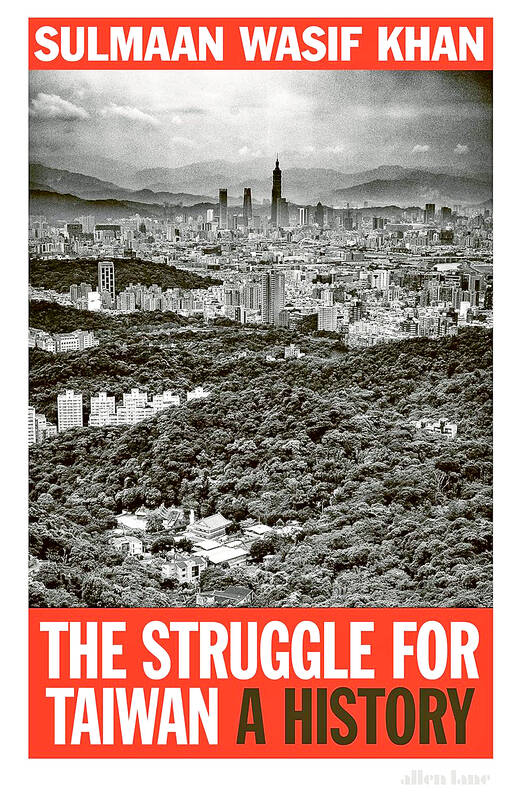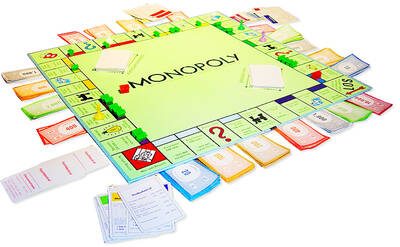When news of this book’s release appeared, what struck me — apart from the catchy if somewhat unoriginal title — was the author’s name.
In all the hundreds of books, articles, and academic papers I have read about Taiwan, including reams of footnotes and bibliographies, I could not recall any reference to Sulmaan Wasif Khan.
Of course, my knowledge is far from exhaustive. Khan is an associate professor of international history and Chinese foreign relations at Tufts University. His 2018 work Haunted by Chaos examines the “grand strategies” of China’s rulers from Mao Zedong (毛澤東) to Xi Jinping (習近平) — policies premised on historical insecurities, one of which is the status of Taiwan.

In online lectures and podcasts, Khan discusses these and other points that are raised in this book, including the lack of context about Taiwan that has hampered successive US administrations, as well as parallels between current tensions in the South China Sea and pre-WWI Europe.
A further indication of Khan’s pedigree is his association with Odd Arne Westad, a renowned East Asia specialist, to whom the book is dedicated and, under whose guidance, Khan attests, “quixotic fantasies” of writing this book became reality.
Still, as I often am with works by nonspecialists, I was apprehensive; not because I’ve found the analysis to be substandard — it’s often refreshingly good — but because the text sometimes betrays a limited familiarity with Taiwan: incomplete presentations of important incidents, a tenuous grasp of contemporary society, and basic errors, all of which many non-academic, long-term residents of Taiwan would notice.
INCOMPLETE PICTURE
Khan doesn’t quite avoid these pitfalls in this book. One example is the section on the 2004 presidential election in Taiwan.
Here, Khan mentions the controversial but ultimately doomed referenda proposed by the incumbent, former president Chen Shui-bian (陳水扁) of the Democratic Progressive Party (DPP), the ensuing displeasure from US officials who saw Chen’s behavior as a needless provocation of Beijing, and even a visit by the unsuccessful Chinese Nationalist Party (KMT) candidate Lien Chan (連戰) the following year to China, “where crowds of enthusiastic Chinese welcomed Grandpa Lien home.”
However, the author largely glosses over the election eve shooting of Chen and vice president Annette Lu (呂秀蓮). The pair “were shot at,” he writes — neglecting to clarify that they were hospitalized, albeit briefly, with minor wounds.
And while Khan acknowledges that some voters believed incident was staged “to elicit sympathy,” that the KMT would “file suit” for electoral fraud, and that the DPP’s loss in the legislative vote revealed “a torn electorate,” there is no discussion of the post-election turmoil, as senior pan-Blue figures including vice presidential candidate James Soong (宋楚瑜) incited protestors to “storm” the Central Election Commission.
To those living in or carefully observing Taiwan at the time, this was among the most tension-fraught periods in post-democratic Taiwan. Yet, largely ignored are the huge divisions in society — exacerbated by the stoking of ethnic tensions, particularly by Chen, whose oft-invoked “love Taiwan” slogan was seen as a dog whistle for an us vs them rift between waishengren (those who moved to Taiwan from China after 1949) and benshengren (those who came in the centuries preceding World War II).
The closest we get to a treatment of these issues comes in a different context, as Khan notes that Chen’s successor as president, Ma Ying-jeou (馬英九) adopted the catchphrase “I am a Taiwanese,” on the advice of former president Lee Teng-hui (李登輝), who realized the importance of the KMT playing up its home soil credentials.
OTHER FLAWS
Elsewhere, with no discussion of the “30-second bill” that was rammed through the legislature, helping to spark the Sunflower movement, Khan’s analysis of the fallout over the Cross-Strait Service Trade Agreement (CSSTA) is also lacking.
On the same topic, Khan notes that Taiwan People’s Party Chairman Ko Wen-je (柯文哲) “promised to revisit” the CSSTA, without mentioning that the surge in popularity that propelled Ko to the Taipei mayorship in 2014 followed his solidarity with the Sunflowers against the undemocratic passage of the agreement.
There are also some bewildering passages — one featuring the claim that rebellion “would emerge suddenly and unexpectedly” in the years after the 228 Incident of 1947, an anti-government uprising that was violently suppressed. In support of this assertion, Khan offers the case of historian and leftist independence activist Su Beng (史明) “who would organize a few youths to launch a revolution for the island” in 1950. This is followed by the argument that “[i]t was in reaction to 228 that the Taiwan independence movement was born” — at best, a misleading notion.
SOLID INSIGHT
These flaws are regrettable, as the best parts of this book are excellent. The first three chapters, which take us from the death throes of WWII and the KMT occupation of Taiwan to the country’s first free elections and the Third Taiwan Strait Crisis of 1995-1996, expose the perennial policy blunders, misunderstandings, and miscommunications between the US and China.
This is as solid an introduction on how we came to “the edge of chaos” as one will find. Continual misjudgments, flip-flopping, and — occasionally — willful ignorance of Taiwan’s peculiar circumstances from leaders in Washington and Beijing, meant that opportunities to chart a different course were routinely missed. The possibility of a UN trusteeship, recommended by then American vice-consul in Taipei in 1942 and again by General Albert Wedemeyer five years later “was a difficult course of action but, theoretically at least, a feasible one.”
The diplomat George Kennan went further, suggesting that “Formosan separatism is the only concept which has sufficient grass-roots appeal to resist communism.” Had any of these courses been followed, “the world might well have had a sovereign Taiwan. (It is notable that Khan avoids the question of what would have happened to the 300,000 “evicted KMT troops” ahead of a proposed plebiscite.)
Alas, any prospect of such alternatives was beset by “strategic drift,” as the US doubled down on its support of KMT leader Chiang Kai-shek (蔣中正). This, as Khan observes, “would leave America in an odd bind.” For while it was “committed to a China it had no desire to be bound to,” Washington was desperate for “a modus vivendi with the other China.”
In the end, Washington “lacked the appetite to accept the costs the requisite policy would entail.” For these insights into Cold War missteps and the tantalizing glimmers of what might (and should) have been, Khan is to be commended. As he sagely advises in the book’s concluding line, future decisions on Taiwan “are best made with the historical record — and all its unrealized possibilities — firmly in mind.”

With one week left until election day, the drama is high in the race for the Chinese Nationalist Party (KMT) chair. The race is still potentially wide open between the three frontrunners. The most accurate poll is done by Apollo Survey & Research Co (艾普羅民調公司), which was conducted a week and a half ago with two-thirds of the respondents party members, who are the only ones eligible to vote. For details on the candidates, check the Oct. 4 edition of this column, “A look at the KMT chair candidates” on page 12. The popular frontrunner was 56-year-old Cheng Li-wun (鄭麗文)

“How China Threatens to Force Taiwan Into a Total Blackout” screamed a Wall Street Journal (WSJ) headline last week, yet another of the endless clickbait examples of the energy threat via blockade that doesn’t exist. Since the headline is recycled, I will recycle the rebuttal: once industrial power demand collapses (there’s a blockade so trade is gone, remember?) “a handful of shops and factories could run for months on coal and renewables, as Ko Yun-ling (柯昀伶) and Chao Chia-wei (趙家緯) pointed out in a piece at Taiwan Insight earlier this year.” Sadly, the existence of these facts will not stop the

Oct. 13 to Oct. 19 When ordered to resign from her teaching position in June 1928 due to her husband’s anti-colonial activities, Lin Shih-hao (林氏好) refused to back down. The next day, she still showed up at Tainan Second Preschool, where she was warned that she would be fired if she didn’t comply. Lin continued to ignore the orders and was eventually let go without severance — even losing her pay for that month. Rather than despairing, she found a non-government job and even joined her husband Lu Ping-ting’s (盧丙丁) non-violent resistance and labor rights movements. When the government’s 1931 crackdown

The first Monopoly set I ever owned was the one everyone had — the classic edition with Mr Monopoly on the box. I bought it as a souvenir on holiday in my 30s. Twenty-five years later, I’ve got thousands of boxes stacked away in a warehouse, four Guinness World Records and have made several TV appearances. When Guinness visited my warehouse last year, they spent a whole day counting my collection. By the end, they confirmed I had 4,379 different sets. That was the fourth time I’d broken the record. There are many variants of Monopoly, and countries and businesses are constantly